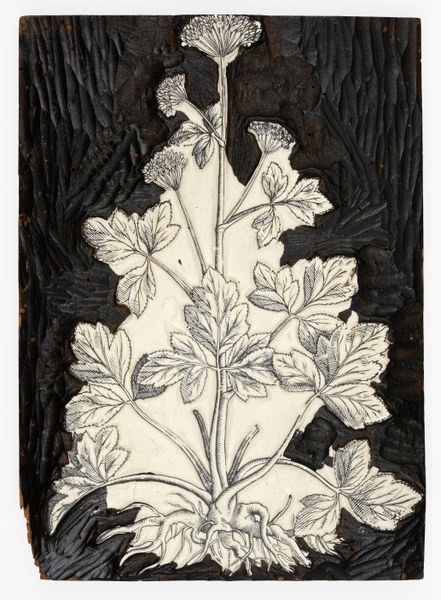Throughout the early modern period, art was a powerful tool for capturing, recording, and sharing the knowledge of nature, with women artists playing a prominent role in advancing botanical scholarship. Usually trained by close family members or hired professionals, they were excluded from such key aspects of artistic instruction as the study of the male nude and directed instead to less ambitious genres, especially still-life painting. Representing the natural world afforded women artists opportunity to overcome these social and artistic constraints, revealing the full breadth of their talent through close observation to nature, often enhanced by technical precision and attention to detail. The relationship between the artistic and scientific aspects of their practice, however, was far from straightforward; nor were their productions always considered of value to professional botanists. As in the case of flower painting, their works could be admired as important records of botanical collections or dismissed as a genteel pastime.
This section showcases the work of both well-known professional artists—including such celebrated figures as Maria Sibylla Merian and Giovanna Garzoni—and others, who, for various reasons, achieved less renown in their careers, for example, Clara Maria Pope and Priscilla Bury or Camille de Chantereine, a Parisian artist and teacher striving for success in a field dominated by male practitioners. It also features gifted artistic amateurs, many of whom revealed conspicuous gifts for painting and observation. These more obscure names include Magdalena Rosina Funck, a young lady from Nuremberg fascinated by the world of flowers; Lydia Byam, whose simple technique shows genuine engagement with the flora of her native Antigua; and Augusta Robley, also a member of a British expatriate family, who studied plants growing in her mother’s garden in Madeira. Their stories expand our understanding of the role of women artists at the intersection of botanical knowledge and aesthetics in the period from the early seventeenth through the mid-nineteenth centuries.
Exhibit Items
Artist unknown, woodcut, from Pietro Andrea Mattioli, Commentarii in sex libros Pedacci Dioscoridis (Venice: Valgrisi, 1565)
Artist unknown, ca. 1560s, 22 × 16 × 2 cm, wood carving
Jessie Wei-Hsuan Chen, 2020, 22 × 16 × 2 cm, wood carving
Wilhelm Sandler, 55 × 38 cm, hand-colored lithograph, from Johann Emanuel Pohl, Plantarum Brasiliae icones et descriptiones, vol. 2 (Vienna: Strauss, 1827–31)
Wilhelm Sandler, 55 × 38 cm, hand-colored lithograph, from Johann Emanuel Pohl, Plantarum Brasiliae icones et descriptiones, vol. 2 (Vienna: Strauss, 1827–31)
Pieter Sluyter after Maria Sibylla Merian (1647–1717), hand-colored etching and engraving, from Maria Sibylla Merian, Metamorphosis insectorum surinamensium (Amsterdam: Oosterwyk, 1719), plate 45
Joseph Mulder after Maria Sibylla Merian (1647–1717), hand-colored etching and engraving, from Maria Sibylla Merian, Metamorphosis insectorum surinamensium (Amsterdam: Oosterwyk, 1719), plate 1
Lydia Byam (1772–after 1799), watercolor, from A Collection of Exotics, from the Island of Antigua, by a Lady (London: White, ca. 1799), plate 9
Lydia Byam (1772–after 1799), watercolor, from A Collection of Exotics, from the Island of Antigua, by a Lady (London: White, ca. 1799), plate 10
Giovanna Garzoni (1600–70), Musa, watercolor and gouache, from Piante Varie (ca. 1631), folio 8r
Giovanna Garzoni (1600–70), watercolor and gouache, signed “GARZON,” from Piante Varie (ca. 1631), folio 34r
Anna Maria Vaiani (fl. 1627–50), engraving, signed “Anna M.a Vaiana,” from Giovanni Battista Ferrari, De florum cultura (Rome: Stephanus Paulinus, 1633)
Magdalena Rosina Funck, née Heuchelin (1672–95), watercolor, from Blumenbuch (1692)
Augusta Jane Robley, née Penfold (1809–68), color lithograph, from Augusta Robley, A Selection of Madeira Flowers, drawn and coloured from nature, with text by Reverend William Lewes Pugh Garnons (1791–1863) (London: Reeve, Brothers, 1845), plate 1
Augusta Jane Robley, née Penfold (1809–68), color lithograph, from Augusta Robley, A Selection of Madeira Flowers, drawn and coloured from nature, with text by Reverend William Lewes Pugh Garnons (1791–1863) (London: Reeve, Brothers, 1845), plate 4
Clara Maria Pope, née Leigh (1767–1838), 1818, 58.2 × 49.6 cm, gouache with gum arabic, signed and dated “Clara Maria Pope 1818,” illustration for Samuel Curtis, The Beauties of Flora (Gamston: Curtis, 1820)
Clara Maria Pope, née Leigh (1767–1838), before 1820, 58.2 × 49.6 cm, watercolor and gouache, signed “Clara Maria Pope,” illustration for Samuel Curtis, The Beauties of Flora (Gamston: Curtis, 1820)
Camille de Chantereine (1810–47), ca. 1834–47, 34.8 × 26.5 cm, watercolor on vellum, signed in pencil “C de Chantereine / Peintre de fleurs de La Majesté / l’Imperatrice Douairière du Brazil / Duchesse de Braganza”
Priscilla Susan Bury, née Falkner (1799–1872), 1832, 54 × 42.5 cm, gouache, signed and dated “P. S. Bury del.t Apr. 1832”



















